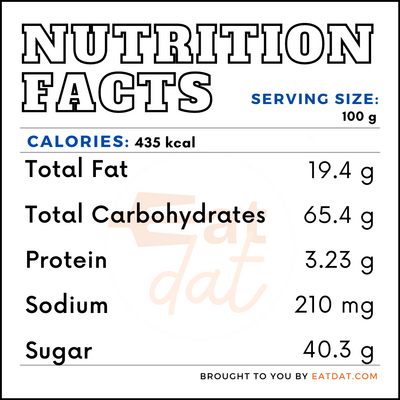
Birthday Cake
What is a Birthday Cake?
A birthday cake is a special dessert eaten as part of a birthday celebration. This dessert usually has a few layers of cake and is topped with frosting, candles and decorations.
According to Taste Atlas, the top 10 most popular cakes in the US are:
- Molten chocolate cake
- New York-style cheesecake
- Red velvet cake
- Boston cream pie
- Ice cream cake
- Devil’s food cake
- King cake
- German chocolate cake
- Coconut Cake
- Angel food cake
Origin
Cakes have been used to celebrate special events since Ancient Greece. Greeks baked moon-shaped cakes and decorated them with candles to pay homage to Artemis, the goddess of the moon. The Romans commemorated birthdays with birthday cakes crafted from flour, nuts, yeast, and honey although they didn’t celebrate all birthdays. Only three types of birthdays were celebrated by the Romans: emperor’s birthdays, 50th birthdays, and city or temple birthdays. During medieval times, people were known to bake coins and other symbolic objects into birthday cakes.
In the 15th century, birthday parties became common in Germany and were called Kinderfeste. At these parties, children received birthday cakes with candles that wouldn’t be blown out, but instead left to burn all day long. By the 17th century, cakes were made with multiple layers, icing, and decorations. The ingredients that went into baking a cake were expensive, so mostly only the wealthy ate cakes in early history. When the Industrial Revolution arrived, the prices of these ingredients fell and even bakeries began to sell pre-made birthday cakes.
Nutrition
A slice of birthday cake can have:

The cake’s icing will add carbohydrates from sugar to this celebratory cake. Birthday cake that’s made with eggs or milk will have a good amount of fat in it, as well. It’s possible to make a healthier version of a birthday cake that’s low-fat, sugar-free, and low-carb. Although enjoying this dessert in moderation is acceptable, considering that birthdays only come once a year.
Commercial production
Birthday cakes, among many other cakes, can be commercially produced in factories often using large production lines. These lines contain a variety of machines that mix, pour, mold, and bake cakes. In bigger factories, cakes can be made without any human intervention. Smaller, more artisan operations have bakers mixing the batter, stacking layers, and decorating cakes. The size of the operation will dictate how many cakes can be commercially produced each day.
Uses
Birthday cakes can be enjoyed at any time of day, but to expand the shelf-life of your cake, you should correctly store it. Unfrosted cake layers store best when tightly wrapped and placed in a ziploc bag. These layers can be stored at room temperature for up to five days. If longer storage is needed, they can be wrapped in foil and placed in the freezer.
For frosted cakes, you can use a cake keeper or overturned bowl to store a cake at room temperature for up to five days. In the event that the cake is cut, you can place cling wrap on the slices to lock in moisture. You should only refrigerate your cake if you live in a very hot or humid place and can’t guarantee a cool kitchen. In that case, make sure the cake is carefully wrapped to keep it from absorbing smells in the refrigerator.
Recipes
This celebratory dessert can be adjusted to suit all tastes. Here are some popular recipes:
- White Cake
- Yellow Cake
- Chocolate Cake
- Vanilla Sponge Birthday Cake
- Birthday Cupcakes
- Pound Cake
- Gluten-Free Birthday Cake
FDA Regulation
The FDA has regulations for some ingredients commonly used in cakes. Sweet additives used in cakes and other sweets have to meet the ratio specifications outlined by the FDA. Cakes also have strict labeling regulations regarding serving size and ingredients.
References
Nowak, Claire. “Here’s Why You Should Thank the Ancient Greeks for Your Birthday Cake.” Reader’s Digest, Reader’s Digest, 24 July 2017, www.rd.com/culture/origin-of-birthday-cake/.
“Birthday Cake Facts for Kids.” Kids Encyclopedia Facts, Kiddle Encyclopedia, 22 May 2020, https://kids.kiddle.co/Birthday_cake.
Sterling, Justine. “A Brief History of the Birthday Cake.” Food & Wine, 23 May 2017, www.foodandwine.com/desserts/cake/brief-history-birthday-cake.
“CFR – Code of Federal Regulations Title 21.” Accessdata.fda.gov, U.S. Food & Drug Administration, 1 Apr. 2019, www.accessdata.fda.gov/scripts/cdrh/cfdocs/cfcfr/cfrsearch.cfm?fr=101.12.
